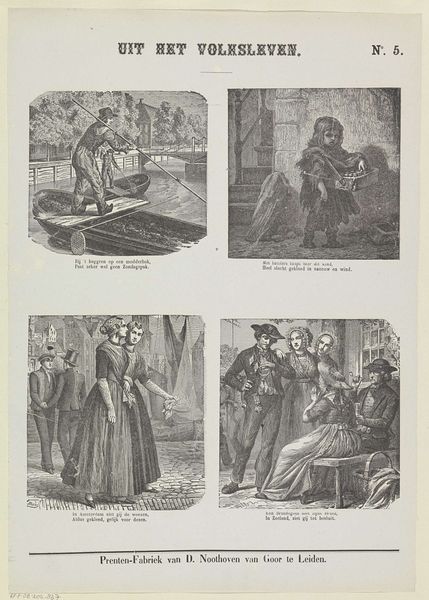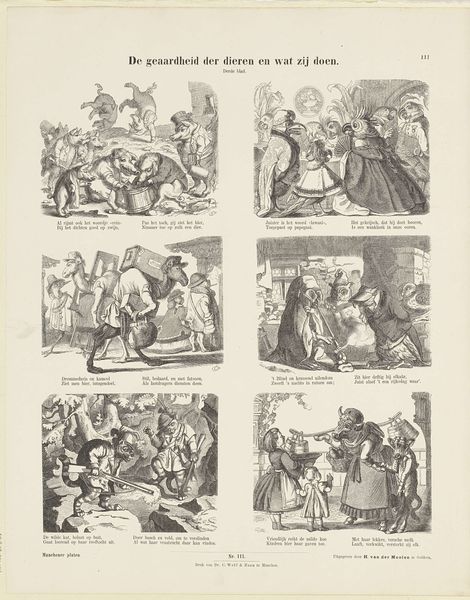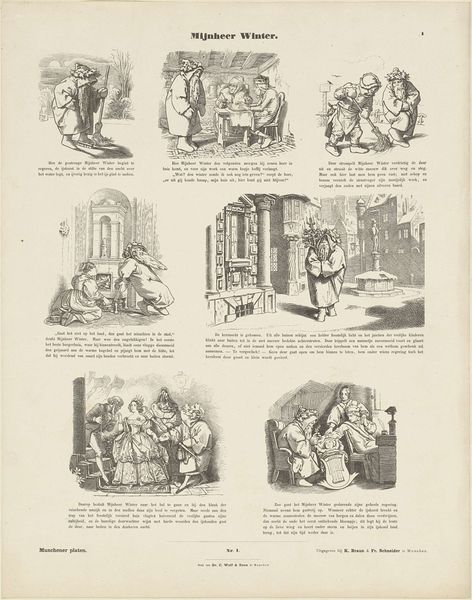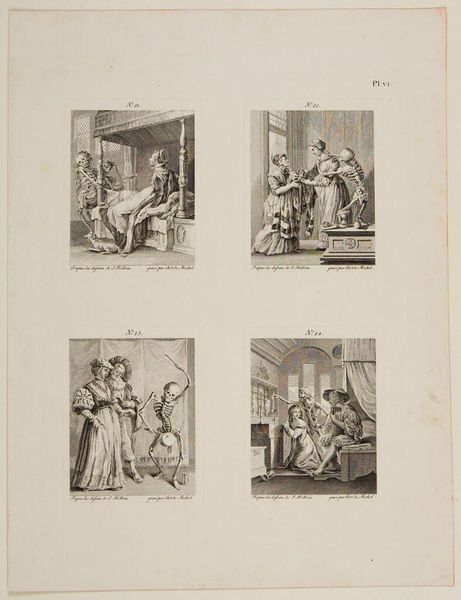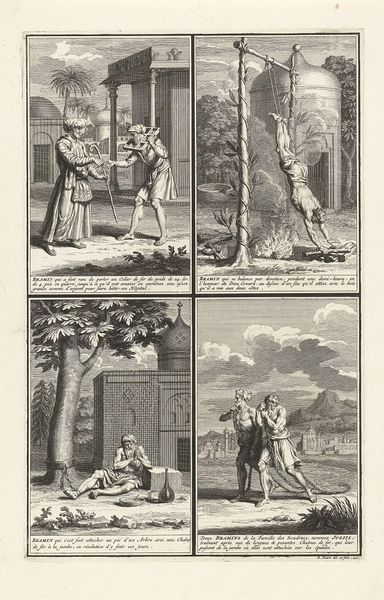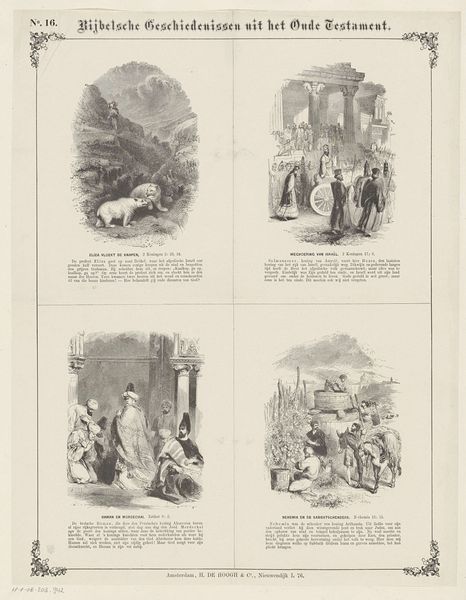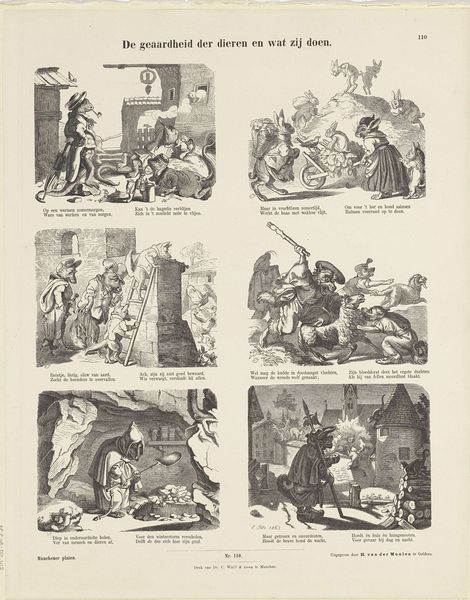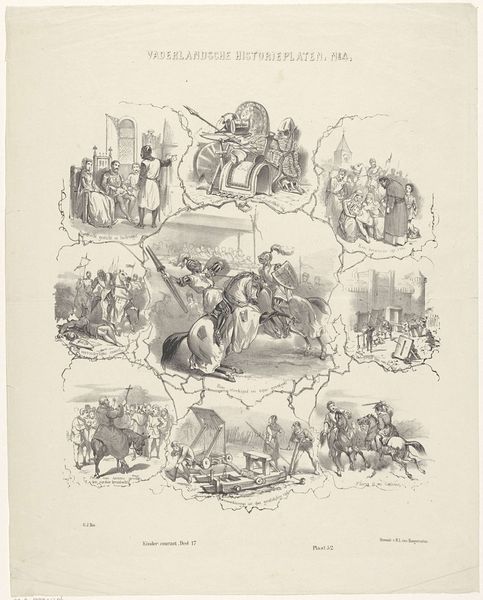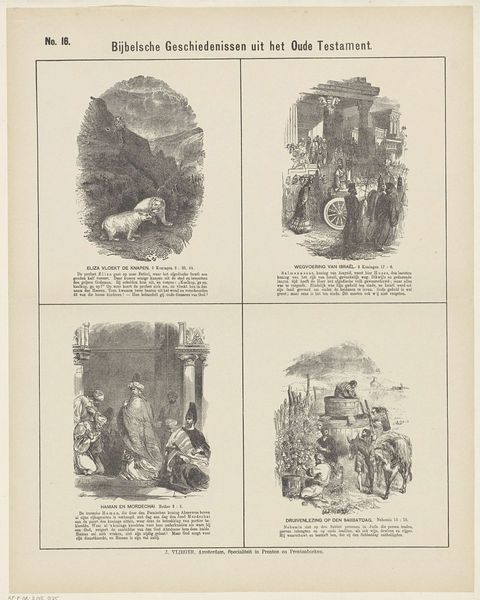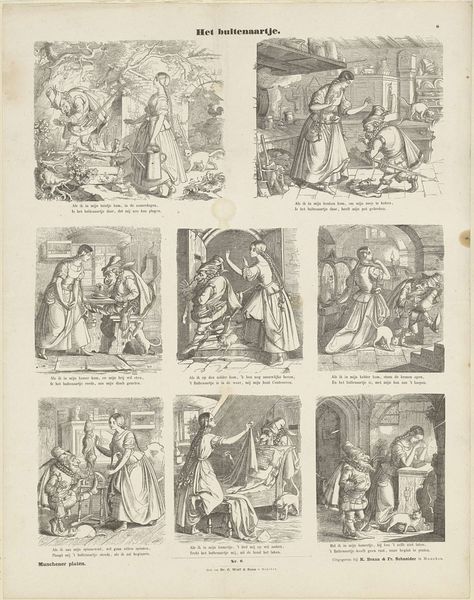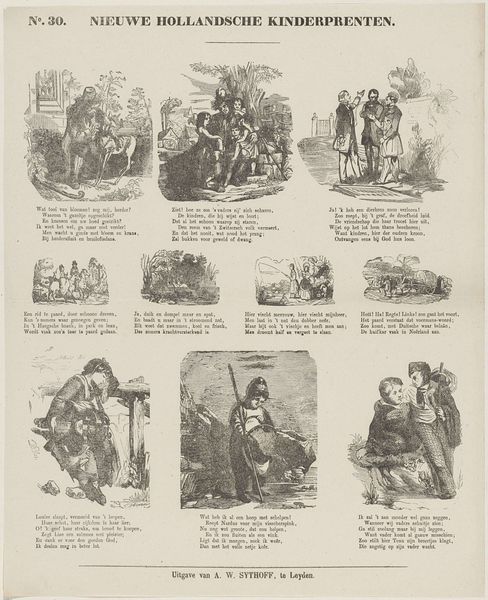
print, engraving
#
medieval
#
narrative-art
# print
#
old engraving style
#
history-painting
#
engraving
Dimensions: height 442 mm, width 348 mm
Copyright: Rijks Museum: Open Domain
Editor: So, here we have “Scenes from the Middle Ages,” an engraving dating roughly from 1843 to 1920, attributed to Anton Muttenthaler. The series of vignettes is fascinating. It reminds me of a sampler, in that it gives small samples of life from the era. How do you interpret this work? Curator: It’s interesting you call it a sampler. The act of compiling these images, re-presenting the "Middle Ages," speaks volumes about the 19th-century gaze. We need to question the politics of nostalgia at play. What does idealizing a medieval past do for the present in which this engraving was made? Editor: Politics of nostalgia… I hadn’t considered that angle. I was more caught up in the individual narratives within each little scene, and how it evokes different emotions! Curator: Precisely! Consider the narratives presented here, and more importantly, those that are excluded. Where are the images of peasant life, of revolts, of the daily struggles for survival? Does this curation paint a complete, or even accurate, picture? Think about who is centered and whose stories remain untold. Editor: So, by focusing on what’s *missing*, we gain a deeper insight into the values and ideologies of the time period when this was *created*, rather than the one depicted. I guess it shows the patron’s worldview too. Curator: Exactly. And notice the printing press information—who produced and distributed these images? Exploring these networks can tell us who was able to circulate particular narratives, solidifying specific views of the past. Editor: It’s made me think of it less as an innocent collection, and more as a deliberate construction, like propaganda for a social agenda from that time. Curator: Well, propaganda is a loaded term. But I encourage you to think critically about what we accept as 'history,' and whose voices are amplified in that construction. Editor: Definitely! Seeing it as a constructed narrative really changes how I approach historical artworks. I guess what is selected to portray any era shows you how those who did the selecting wanted you to understand it! Curator: Indeed, a critical eye transforms passive viewing into active interrogation.
Comments
No comments
Be the first to comment and join the conversation on the ultimate creative platform.

